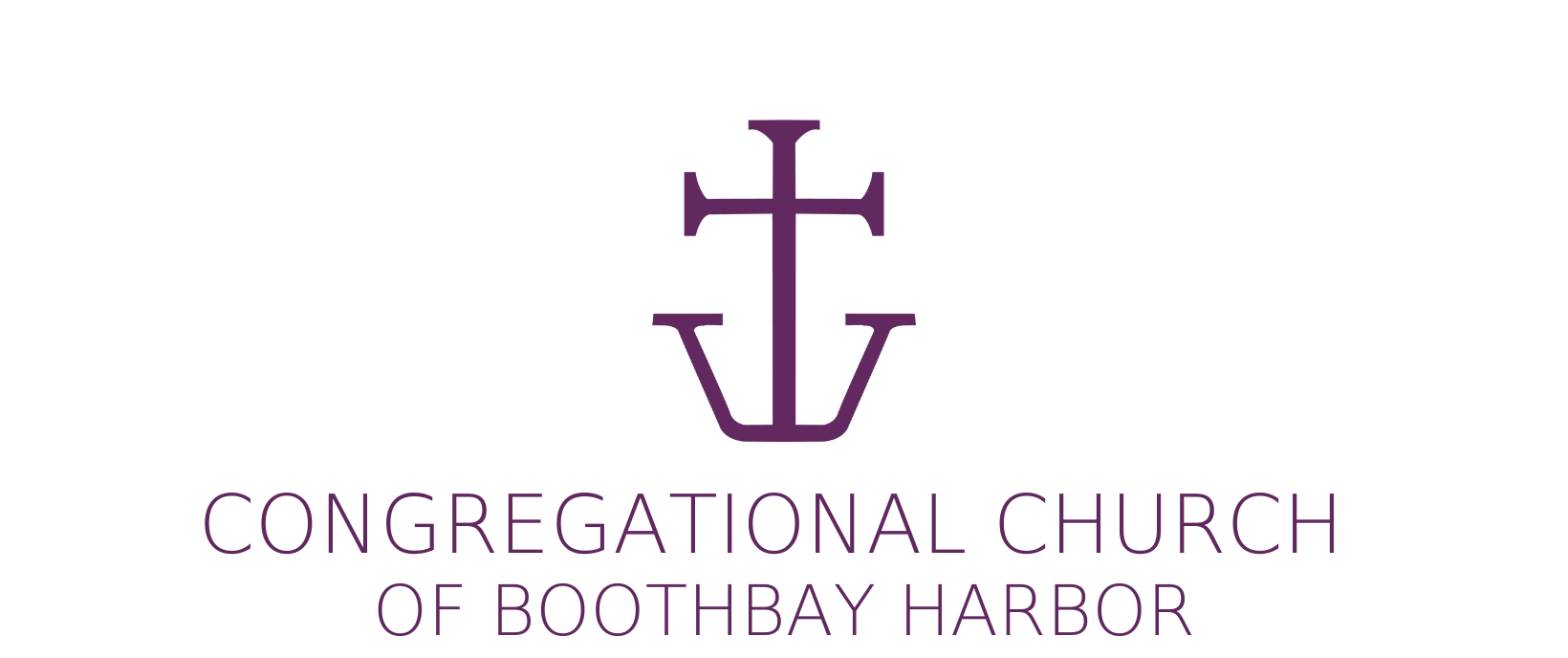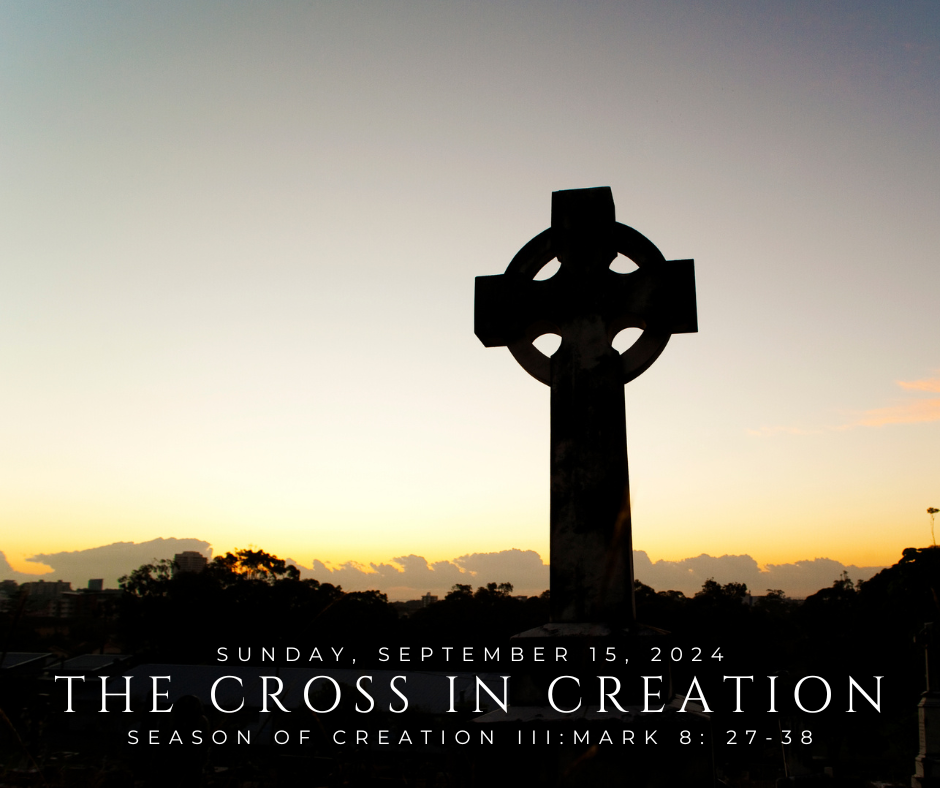
What does it mean to pick up the cross when dealing with climate justice?
“If any wish to come after me, let them deny themselves and take up their cross and follow me. For those who want to save their life will lose it, and those who lose their life for my sake, and for the sake of the gospel, will save it."
Whenever Peter is a main character in a Gospel story, I say, "There is my guy." He is the avatar for my awkward, mistake-filled, yet passionate and committed journey towards God. His character shows me where I am overconfident in my thoughts, living in denial, and yet longing to get it right. I've often preached on this scripture, and it still provokes new insight. This week's thought experiment was to view this story from a new angle. As we celebrate Seasons of Creation, what might this text say about climate change, creation care, and justice?
Three things occurred to me in my meditations. Peter’s character can help us work through our fear and denial, which is the most significant barrier to navigating the threats of climate change. Second, picking up our cross, in relation to climate change, means doing hard things with great hope. Third, the image of the cross is not just about pain and suffering but also shows us we are interconnected, and God is working in us to make all of creation whole. To help us, we will look at the image of the Celtic cross, which is rooted here on Earth and connects us to heaven.
The power of this story is that we often stand in the same space as Peter. We are drawn to the message of God's great life-transforming and healing love but struggle to face the challenging implications of following the path. Peter begins the story as the hero with the wisdom to recognize Jesus as the Messiah. But when Jesus says the leaders of established religion are going to reject him, kill him, and yet he will rise, Peter confronts Jesus. You may be the Messiah, Jesus, but you have got it all wrong. We will organize the people, march into the Temple, and take charge. I think that was Peter's plan because it was precisely the plan of the Jewish revolt in 66 CE. The outcome was the total destruction of the Temple. Jesus had something more powerful in mind than seizing power. He offered a deeper soul transformation through the power of love. Jesus wanted more than power, he wanted to shift human history.
A powerful part of Jesus' teachings is the wisdom and courage to face our fears. Jesus does not teach us that we will always be successful, triumphant, and protected from harm and loss. His message is since the Creator of the Universe is Love, we can face anything with faith, hope, and love. What Peter and I have in common is clinging to the false gods who promise certainty, power, and success instead of the spiritual struggle that goes with being transformed by love.
What happens when I worship a false god of security and certainty without facing the inevitable struggles of being human? We start to deny reality. When we don't face fears honestly, we end up in denial to protect ourselves. Here, Jesus' message to pick up a cross and follow him intersects with climate change. There is a powerful temptation to deny what is happening to our planet and lives.
I remember when I first became aware of the possibilities of climate change. In grade school in the 1970s, I saw the movie Soylent Green, Harrison Ford's first major movie. The plot was that overpopulation and destructive uses of the environment lead to eating Soylent Green, which was actually people. I was terrified by this possibility, but when I shared this with my fourth-grade class, they thought it was ridiculous. My teacher asked if my parents knew I had watched this movie. It was their idea, I responded. I wonder if she called Child Protective Services. I got the message to be careful talking about things people don't want to think about. Soylent Green was 40 years ahead of the Netflix Movie "Don't Look Up," where the human response to a meteor heading to Earth was to say, just don't look up.
Climate change was hardly a topic in last Tuesday's presidential debate. That evening, Hurricane Francine was charging towards the Louisiana coast, and millions of people were bracing for life-threatening impact. Wildfires due to drought conditions in Orange County raged. Yet climate change was barely mentioned by either candidate. When talking about the housing crisis, no one said last year, over 135,000 homes were severely flooded,1 and 3000 families lost their homes to wildfires.2 We heard concerns about inflation but not the $92.9 billion spent in 2023 on climate-related weather disasters. How serious is $92.9 billion? The entire budget for Housing and Urban Development is only $70 billion. We heard a great deal of bluster about immigration, but not that climate change is a significant driver of people leaving their homes in Central America. Climate change will drive food prices, housing costs, immigration, and foreign policy for the next few decades. Saying that out loud feels like saying, "Soylent Green is people" at the movie's end.
But there is another way. It involves picking up our cross, as Jesus called his disciples. It means losing some of our life now to save it for the future. Let's unpack this idea.
When I say "cross," what comes to mind? What are the songs related to the cross? You likely know the refrain of "The Old Rugged Cross." I have nostalgia for the music but not the theology. It describes the cross as "an emblem of suffering and shame" and emphasizes the importance of blood sacrifice to overcome guilt. While this idea that God demands sacrifice does appear in scripture, Old Testament prophets often said that God demanded justice, right action, and loving your neighbor over making sacrifices at the Temple. Jesus directly confronted the sacrificial system when he cleared the sacrificial animals out of the Temple.
Sacrifice is a tricky word. It can be a positive action. Parents make financial sacrifices to help their children prepare for life. Veterans and their families sacrifice to defend our nation's freedoms and values. Doing something for others at a personal cost is a worthy character trait. But when sacrifice becomes the point, we distort the meaning. Our goal is to do good for others, not to bring pain and suffering to ourselves. At times, theology has glorified pain and suffering for its own sake. But the wisdom of scripture is not that suffering is good for you. "No pain, no gain" is not a scripture reference nor a good motto for going to the gym. You often learn something when you suffer. I learned things from physical suffering with Crohn's Disease. I learned to stop doing things that made me suffer needlessly.
The symbol of the cross must not be reduced to glorifying suffering and sacrifice. The values and intentions of God that lie beyond the suffering matter. God calls us to value love, not pain. Paul is clear in his theology that the cross is a symbol of both death and resurrection. The cross has dual meanings, representing brokenness and hope. It reminds us of the worst evil humanity can do and the great love that God intends for us. Paul says that the cross, a symbol of punishment and domination of the Roman Empire, God has changed into a symbol of peace and reconciliation.
When Jesus says, "Pick up your cross and follow me," he is not glorifying suffering and martyrdom but calling us to do hard things for love, truth, beauty, and justice.
I propose that how we portray the cross can help us better understand what the symbol means. My favorite symbol of the cross is the Celtic cross, with its circle around the beams. Tradition credits St. Patrick and St. Columba, the early apostles to the Celts, Picts, Druids, and other peoples of the British Islands. Indigenous people worshiped God in nature, especially the Sun (as you might when you see so little of it). Early Celtic crosses incorporated symbols from these indigenous religions to show Christian compatibility with their beliefs.
The Sun Cross is representative of a phenomenon in nature known as a parhelion or “sun dog.” This image forms when light refracts the sunlight through ice crystals in the atmosphere.
The Celtic cross brings together the cross of Christ with this phenomenon of wonder. This cross vividly portrays the dual nature of the cross representing death and resurrection, hope within suffering, and a God that is within all of creation, not removed to the heavens. Picking up this cross is to overcome our denial of separateness from creation and each other, and embrace our interconnectedness. It celebrates a God who weaves a new creation even within tragedy and injustice.
In a world where it's easier to deny or look away, Jesus calls us to pick up our cross—not as a symbol of suffering for its own sake, but as a commitment to love, truth, and justice. The Celtic cross reminds us that we are woven together with all of creation. It challenges us to see the divine not as distant but as intimately involved in the fabric of our world, urging us to act. It can help us move beyond denial, embrace our interconnectedness, and take up our cross. Together we can commit to the hard but hopeful work of healing our world, for in doing so, we participate in the sacred act of creation that God is weaving among us even now.




